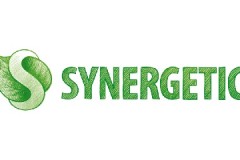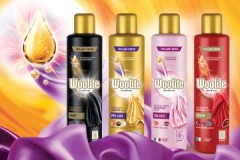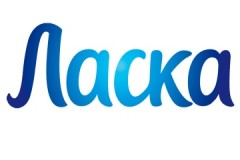Is it better to use gel or powder for washing and why?
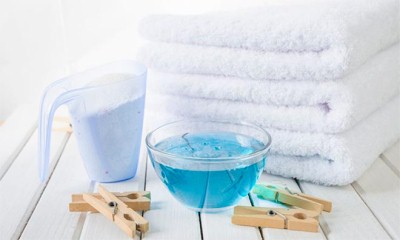 If in past years the choice of detergents was limited to several brands of powders, now the range is much more diverse.
If in past years the choice of detergents was limited to several brands of powders, now the range is much more diverse.
In addition to bulk formulations, gels can be purchased. The liquid consistency attracts with ease of use and manufacturers' assurances of high quality washing.
Read about whether this is really so and what is better to choose for washing - gel or powder, read the article.
Content
Advantages and disadvantages of dry detergent
Loose formulations are used by most people. Even if this detergent is not a favorite, it can still be found in everyone's house.
Powder has the following advantages:
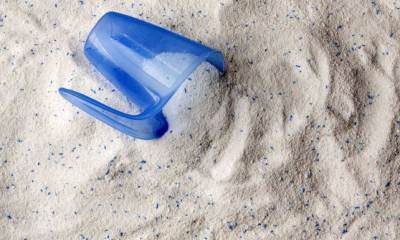 Versatility. This means that it can be used in almost any circumstance: for washing in the machine and by hand, for various types of fabrics.
Versatility. This means that it can be used in almost any circumstance: for washing in the machine and by hand, for various types of fabrics.- High efficiency. Powders work well even on stubborn stains.
- Washable at all temperatures: both low and high.
- Long shelf life.
- The possibility of soaking.
- Affordable price. On sale you can find a composition for any wallet.
Disadvantages:
- The powder is dusty and may irritate the eyes and respiratory tract.
- After opening, the package is open, because of which its contents may become damp or wake up. Powder can clump even in the hopper.
- Particles are difficult to wash out of the fibers of the fabric, which affects the quality of the rinse.
- Aggressiveness towards tissues. Loose formulations are not suitable for washing and soaking delicate fabrics.
Pros and cons of liquid
If for Russia gels can be considered a relative novelty, then among the inhabitants of Europe and the United States they have long come into use. They are preferred by more than 40% of the population of foreign countries.
This is not surprising since liquid products have a number of undoubted advantages:
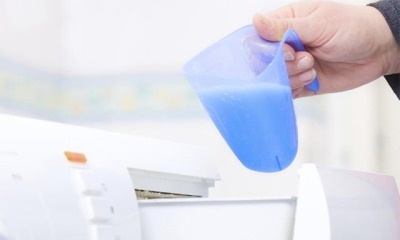 Convenient packaging. The formulations are poured into plastic bottles that do not take up much space. They are firmly closed with a cap, which prevents any contamination from getting inside.
Convenient packaging. The formulations are poured into plastic bottles that do not take up much space. They are firmly closed with a cap, which prevents any contamination from getting inside.- Easy to dispense. All containers are equipped with a dispensing lid, and the exact recommendations for the use of a specific detergent are indicated on the packaging.
- Good water solubility.The gel is initially liquid, so its formula takes effect immediately after starting the wash cycle.
- No streaks on clothes after washing. The product is easy to rinse out without lingering in the fibers of the fabric.
- High quality washing. Most gels from the middle price range are washed as well as expensive powders.
- Less risk of developing allergies. When using the gel, dust does not form, which can get into the respiratory system. In addition, high-quality leaching of the composition from the tissues reduces the risk of irritation on the skin.
- Gentle effect on fabrics. The gel is used for washing delicate items, as it activates even in cool water.
- Savings on fabric softener. The need to use it when washing with liquid powders simply disappears.
Gels have some disadvantages, including:
- Manufacturers recommend using them only for washing in an automatic machine. Manual processing of things is best done using a powdery product.
- Gel costs more than washing powder.
- The composition is effective at 30-40 degrees. It is not used for washing in hot water.
You will find all the most important things about washing gels here.
General properties
Powder and gel are products designed to achieve a single goal: to remove dirt from things, which is their main similarity. The basis of the detergent formula is represented by synthetic surfactants, but their percentage is different.
Both powders and gels are available for washing colored and white items. On sale you can find cheap and expensive detergents.
Major differences
Despite the fact that all products are used for washing clothes, they have certain differences:
 Composition. Unlike powders, cationic and nonionic surfactants prevail in gels. Loose laundry detergents contain more anionic surfactants. Therefore, the gel is easier to refresh the fabric, it acts softer.
Composition. Unlike powders, cationic and nonionic surfactants prevail in gels. Loose laundry detergents contain more anionic surfactants. Therefore, the gel is easier to refresh the fabric, it acts softer.- Release form... Unlike gels, powders tend to get dusty when poured into the detergent drawer.
- Various additives... Due to their liquid formula, manufacturers add various extracts, peroxide salts and water softening components to washing gels. It is impossible to use some of them in the process of making washing powders.
- Shelf life... It is higher for powder than for liquid detergents.
- Price. Gels are more expensive.
- Rinsing quality... After using the powder, white streaks often remain on things.
- Washing temperature... For gels, the maximum threshold is limited to 60 degrees, and for powder, 90 degrees.
How to choose what to wash?
In some cases, preference is given to gel, in others - to powder. It depends on many factors, namely:
- what kind of washing is to be done - hand or machine;
- what things will be erased - delicate or dense fabric;
- what is the washing temperature and the type of dirt;
- what amount a person has and not only.
If you prioritize correctly, you will be able to significantly improve the quality of washing.
Regular powder preference is given in the following cases:
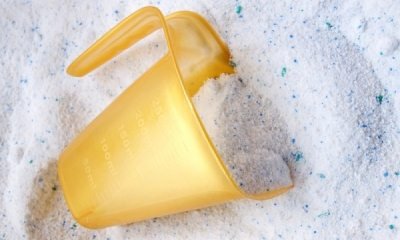 It is used when washing in hot water (up to 90 degrees) is required. Not afraid of such temperatures cotton and linen.
It is used when washing in hot water (up to 90 degrees) is required. Not afraid of such temperatures cotton and linen.- Worn and washed clothes with stubborn stains (from blood, wine, juices, etc.) are also washed with powder.
- Hand wash to be done.
- Things need to be disinfected and get rid of persistent odors.
When to make your choice in favor of the liquid form:
- The liquid formula is ideal for the care of delicate fabrics: wool, silk, synthetics, mixed materials.
- Daily wash to be done, things are not very dirty.
- The person suffers from allergies or asthma.
- The wash cycle will be short, there is no time for an additional rinse.
Comparative characteristics
Comparative characteristics of liquid and bulk detergents are presented in the table:
| Comparison criteria | Powder | Gel |
| Release form | Loose powder | Liquid concentrate |
| Features of the composition | Anionic surfactants prevail (the hardest) | Co-surfactants prevail: nonionic and cationic (have a mild detergent effect) |
| Washing temperature | Up to 90 degrees | Not higher than 60 degrees (preferably 30-40) |
| Washing type | Manual and machine | Machine room |
| Application features | For removing tough stains, for soaking | For everyday washing |
| Rinsing | An additional rinse is required | Rinses well |
| For what type of fabric | Not suitable for all delicate fabrics | Can be used to care for delicate fabrics |
| Disinfection ability | High | Low |
| Health safety | Less secure | Safer |
| Price | Different price category, there are cheap funds | Average price category and above |
Reviews
 On the Internet, you can find many reviews about the use of powders and gels.
On the Internet, you can find many reviews about the use of powders and gels.
Many housewives prefer liquid detergents., as they are considered more convenient to use. They are satisfied that they are well rinsed out, and after them there are no white stains.
Other consumers don't notice the difference between gels and powders. Therefore, they use those compositions that are cheaper. The advantages of the powder include its high efficiency in the fight against old stains.
Related videos
The best way to wash - gel or powder, the video will tell you:
Conclusion
Both gels and washing powders have their advantages and disadvantages. It is most practical to have 2 detergents on hand at once and use them as needed., depending on the type of wash to be done and the fabrics.

